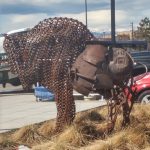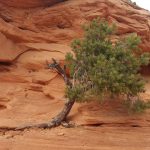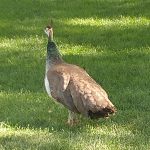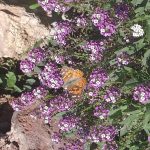 ECE’s expedition is art.
ECE’s expedition is art.
We spent the fall learning about color, doing some artist studies, and practicing our artist skills. We went on some amazing excursions, including to the Botanic Gardens to study the sculptures of Alexander Calder and to the Cherry Creek Reservoir in connection of our study of the artist, Andy Goldsworthy.
For the remainder of the school year, ECE will be studying community or public art, asking questions such as the following: “What is public art?” “Does the artist have a message in his or her public art, and if so, what is the artist’s message?” “What materials do artists use to create public art?” “How can we create our own public art?”
We will be looking at outdoor sculpture, street painting and chalk drawing, among other types of public art, so that we can experience a different kind of art. Our goal is to figure out how we, too, can value permanence, take care of the environment and beautify our community.
Kindergarten
This fall, students build their literacy and citizenship skills as they engage in a study of toys and play. Students begin the year by considering norms and behaviors for sharing toys and interacting with peers through structured conversations, learning experiences such as role-play and guided discovery of toys, and an analysis of the text Llama Llama Time to Share by Anna Dewdney.
Students then learn more about toys as they consider what makes something a toy and what makes toys fun. They learn to sort and describe toys by specific attributes. They also begin to think about perspective as they discuss and write about their own toy preferences, using language and ideas from the text Toys Galore by Peter Stein.
Lastly, students deepen their understanding of perspective as they read the text Have Fun, Molly Lou Melon by Patty Lovell. Students also learn about toys from a historical perspective using the text Playing with Friends: Comparing Past and Present by Rebecca Rissman. As a culmination of the unit, students interview a classmate about his or her preferred classroom toy. They use the information from the interview to create their performance task: an informational piece of writing and drawing about their classmate’s preferred toy and how the classmate likes to play with it.
Weather Wonders
In this module, students build their literacy and science skills as they engage in a study of the weather. The module begins with a story about a young girl named Sofia who is curious about the weather. Sofia wants to learn more about how she can be prepared for any type of weather, and she asks the kindergarten students to help her in this quest. They create a class weather journal and track their individual learning in a meteorologist’s notebook. Students broaden their study as they think about how weather affects people in different places around the world and characters in a variety of narrative texts. Students listen to The Snowy Day by Ezra Jack Keats read aloud and continue to think about how the weather affects the choices people make about what to wear and what to do each day. They then use this book as a mentor text for their performance task, in which they plan and write an imaginary narrative about how the weather on a particular day affected what a person wore and did. They revise, edit, and practice reading their original narratives in preparation for sharing them with families and friends at an end of module.
 Trees Are Alive.
Trees Are Alive.
For the second half of the school year, students in Kindergarten dive into the life of a researcher, as they begin to explore the big ideas that all living things in the natural world have needs in order to survive and grow and that, through observation, we can discern patterns in the ways that living things meet their needs. Through a close study of trees and the living things that depend on them, students take on the roles of researcher and scientist to make observations of the natural world. From those observations, they determine patterns that explain how living things live and grow.
1st Grade
This fall, students build their literacy and citizenship skills as they engage in a study of tools and work. Students first learn about how tools help to do a job. They then extend their understanding of what it takes to do a job when they learn how the “habits of character” of initiative, collaboration, perseverance, and responsibility help them do work. Students are introduced to hand tools through a series of “tool challenges.” In each challenge, students are presented with a dilemma and the question, “Which tool is best for the job?” Students discuss by asking and responding to questions, and ultimately experiencing tools for themselves as they engage in each tool challenge. Following these experiences, students engage in a series of focused read-alouds, featuring people from around the world who use specific tools for certain tasks. Students reflect on their own experiences with tools from earlier in the unit, as well as those they have read about, to construct a definition of tools.
Students then engage in close read-alouds, which focus on the study of characters in new literary texts. Through these texts, students will consider the habits of character that help them make work easier and solve dilemmas. To support their understanding of these habits of character, students experience a new set of challenges. Finally, students use their classroom tools and habits of character to collaboratively create a “magnificent thing” for their classroom. At the end of the module, students take all they have learned about tools and work to create a “magnificent thing” that fulfills an authentic classroom need (e.g., pencil holder for classroom use). Students share, discuss, and reflect on their creation.
Sun, Moon, and Stars
In this module, students build their literacy and science skills as they engage in a study of the sun, moon, and stars. The module begins with a story about a young boy named Elvin who is curious about the sun, moon, and stars. Students study the sun, moon, and stars through various narrative texts and begin to understand how and why the sun, moon, and stars inspire authors. Students respond to texts through role-play and written response. Students focus their study on the science concepts of observable patterns in the sky as they relate to the sun, moon, and stars. Students track their observations of the sun, moon, and stars in pictures and videos in a Sky notebook. They then use the text again as a mentor text to study the author’s craft of writing a narrative poem. Students use their growing understanding of descriptive language, author’s craft, and patterns of the sun and moon to compose a narrative poem titled ?What the Sun Sees.?

The K/1 and 1st grade crews have begun exploring the world of birds and their amazing bodies! Students are honing in on research skills to become ornithologists and discover how birds use their body parts to survive. By doing field work along the Cherry Creek path right outside of our school, we will also be making the connection about the types of birds that share our school habitat, what body parts help them survive and why we need to take care of our shared space, in order to help the birds and teach others about who lives here! We are deepening our research skills by using non-fiction text features to find answers to specific questions, citing evidence from different sources and recording our observations and discoveries through scientific drawings, note taking and lots of writing! Field work this semester will include time outside on our property, visiting the Cherry Creek Reservoir, the Zoo, The Denver Art Museum and other parks that focus on bird observing and protection. In case you haven’t heard, Bird is the word!
2nd Grade
Schools and Community
This fall, students build their literacy and citizenship skills as they engage in a study of schools. Students begin the year by participating in a series of focused read-alouds to explore the guiding question, “What is school, and why are schools important?”
Students will then build on this understanding by engaging in close read-alouds of the text Off to Class: Incredible and Unusual Schools around the World by Susan Hughes. Through this text, students learn about schools around the world and the challenges some communities face in sending their students to school and how they solve these challenges. To support their understanding of this text, students take notes on and write in response to their reading.
Finally, students revisit sections from Off to Class as they engage in whole class research to learn about the similarities and differences between their own school and three schools from the text. Students extend their research in small groups by focusing on one school in particular and producing an informational book about it titled “The Most Important Thing about Schools.”, Students continually participate in collaborative conversations with their peers to process and extend their understandings of the similarities and differences between their own school and the school they have researched.
Fossils Tell of Earth’s Changes
Students build their literacy and science skills as they engage in a study of fossils. Students learn about Mary Anning and her role as a fossil hunter as they engage with key literature standards. Students focus on how Mary Anning responds to major events and challenges, and the overall structure of narratives through structured retells. Students make a pivot to informational texts and engage more deeply in the study of fossils. Students then make the important transition of closely reading complex texts independently. Students are gradually introduced to close reading strategies as they read a few different nonfiction articles on fossils, such as how fossils can teach us about changes that have happened on Earth. Students write, revise, and illustrate their own narratives from the perspective of a paleontologist who has just discovered a fossil.
 The Secret World of Pollination
The Secret World of PollinationSecond graders have started their newest expedition on plants and pollinators. In this first module students will continue to build on their research skills and science knowledge. First, by focusing on how plants grow and survive. Then, honing in on the role of insect pollinators in helping plants to grow and survive. Students will answer guiding questions such as how do we get the fruits, flowers, and vegetables that we enjoy and how do we become researchers and share our learning? We will embark on field work to the Denver Botanic Gardens as well as studying and exploring the plants and pollinators in our own backyard. This module will feed directly into the last unit of study in which students will become advocates on behalf of pollinators.
3rd Grade
Overcoming Learning Challenges Near and Far
This fall students will examine and use literature and informational text as they begin to uncover the power of literacy and how people around the world overcome learning challenges. This learning experience is designed to encourage students to embrace a love of literacy and reading. In the beginning, students build their close reading skills; they hear stories read aloud, read works in their entirety, and read more challenging excerpts closely. Throughout their readings, students determine the gist, identify the central message, and consider what key details convey that message in the text.
Students will then consider how geography and where one lives in the world affects how one accesses books. Students continue building knowledge and vocabulary related to world geography as they study excerpts from My Librarian Is a Camel by Margriet Ruurs, which describes how librarians overcome geographic challenges to get children’s books. Students apply their learning by writing a simple informative paragraph about how people access books around the world, focusing on the role of specific librarians or organizations they studied.
Finally, students focus more on what it means to be a proficient and independent reader. They continue to read literature about characters who are motivated to learn to read and overcome struggles to do so. Students assess their challenges as readers, and identify strategies to overcome those challenges. This learning experience includes a heavy emphasis on building reading fluency. Students write a reading contract in the form of a three-paragraph informative essay, in which they describe two of their learning challenges and some strategies to overcome those challenges.
Adaptations and the Wide World of Frogs
The module begins with students reading poetry and pourquoi tales about different kinds of frogs to generate “why” questions. They write their own fictional pourquoi narratives to attempt to answer some of their “why” questions. In Unit 2, students research to find out the real answers to their frog questions and write paragraphs to communicate their research. Students will build their reading, research, writing, and collaborative discussion skills through studying their expert frog.
Water Around the World
Students read the text One Well: The Story of Water on Earth to build background knowledge about freshwater around the world and the three issues they will read more about later: access to water, demands on water, and water pollution. Students then use the Painted Essay(r) structure to write an opinion essay about the importance of water conservation. students plan and create a video public service announcement to educate people about their chosen water issue and to encourage them to take action with specific recommendations to solve the problem. They write invitational letters to guests for the live launch of their video PSA.
4th Grade
Poetry, Poets, and Becoming Writers
This fall students will examine and use literature and informational text as they begin to uncover what inspires people to write. It is intentionally designed to encourage students to embrace a love of literacy and writing. In the beginning, students build their close reading skills by reading the novel in verse Love That Dog by Sharon Creech and analyzing how the main character, Jack, feels in response to events that happen in the story. Alongside Love That Dog, students closely read and analyze the poems Jack reads and describes, including “The Red Wheelbarrow” by William Carlos Williams and “Stopping by Woods on a Snowy Evening” by Robert Frost. They analyze the poems to determine a theme and to identify characteristics of poetry in order to effectively summarize the poems.
Students then finish reading Love That Dog and plan and write an informative paragraph about what inspires Jack to write poetry. In the second half of the unit, they read A River of Words by Jen Bryant and learn about poet William Carlos Williams, again thinking about what inspired this poet to write. Then, in expert groups, students study a poet of their choice and write a four-paragraph essay about what inspired their poet to write poetry.
Finally, students move from considering what has inspired the poets they have been reading about to write poetry, to think about what inspires them to write poetry. They will write original poems, focusing on word and phrase choice and adding punctuation for effect. Students will then write a presentation explaining why they wrote their original poem and where you can see evidence of this in their poem. Student will also practice reading new poems aloud for fluency in preparation for reading their poems aloud for a performance.
Animal Defense Mechanisms
Students build background knowledge on general animal defenses through close readings of several informational texts. Students read closely to practice drawing inferences as they begin their research and use a research notebook to make observations and synthesize information. Students will continue to use the research notebook, using the millipede as a whole class model. Students plan, draft, and revise the introduction and one choice ending of the narrative with the support of both peer and teacher feedback.
The American Revolution
Students build background knowledge about the Revolutionary War and the different perspectives of colonists. In the second half of the unit, students read about different groups within the Loyalists and Patriots, reading informational texts to determine the main idea, analyze the overall structure of the text, and summarize the texts. Students read the historical fiction play Divided Loyalties to deepen their understanding of the Patriot and Loyalist perspectives. Students read the text closely, focusing on character thoughts, feelings, and actions in response to the different perspectives on the American Revolution. Students write an opinion piece from the Patriot perspective, outlining reasons colonists should join the Patriot cause, in the form of a broadside. Students write a broadside from the Loyalist perspective for the end of unit assessment. Then, for the performance task, students consider both sides and discuss whether they would or would not have supported the American Revolution had they lived during colonial times.
Ratifying the 19th Amendment
This module uses literature and informational texts to introduce students to gender and racial inequality issues in the United States in the first half of the 20th century, and to recognize how the process of ratifying the 19th Amendment can teach us about how people were responding to gender and racial inequality at that time. As they read about events in The Hope Chest, they also read informational firsthand and secondhand accounts of real-life responses to inequality and compare and contrast the information in both. Students connect their learning about the process of ratifying the 19th Amendment to their own lives as they focus on how students can make a difference and contribute to a better world. They research how students around the world have made a difference, before taking action as a class on an issue in their community. students write PSAs encouraging other students to make a difference, and they write a press release sharing with the local media what the class did to take action and the impact of their work.
5th Grade
Stories of Human Rights
What are human rights, and how do real people and fictional characters respond when those rights are threatened? This fall students develop their ability to read and understand complex text as they consider this question. In the beginning, students build their close reading skills by reading the novel Esperanza Rising by Pam Munoz Ryan. They read about human rights and apply this learning as one lens through which to interpret the characters and themes in the novel–a complex coming-of-age story set in Mexico and rural California during the early 1930s. Through close reading, interpretation, and analysis of fiction and nonfiction texts, students begin to build their understanding of human rights. Throughout these learning experiences, students closely read selected articles from the Universal Declaration of Human Rights (UDHR) related to events in Esperanza Rising where human rights are threatened.
Students then finish reading Esperanza Rising, focusing on characters’ reactions and responses to events when their human rights are threatened.
Finally, students continue to revisit the themes of the UDHR, Esperanza Rising, and current events as they plan, write, and ultimately perform monologues based on the experiences of individuals where human rights are threatened.
Biodiversity in the Rainforest
They build background knowledge on biodiversity in the rainforest and rainforest deforestation to understand why scientists, like Meg Lowman, study the rainforest. Having read texts about deforestation, students research using several print and digital sources to identify ways they can help the rainforest and the challenges associated with being an ethical consumer. students write first person narratives, building out a scenario from The Most Beautiful Roof in the World using concrete and sensory language to describe the rainforest as though they were actually there.
Athlete Leaders of Social Change
In this module, students consider the factors that contribute to the success of professional athletes as leaders of social change. They read about a number of professional athletes who have been leaders of social change, beginning with Jackie Robinson. Students build background knowledge about Jackie Robinson through reading Promises to Keep, written by Jackie’s daughter, Sharon. Students determine the main ideas and identify key details, using these to summarize chapters of the book. They then draw from the discussion to write an opinion essay on which factor they think was most important in Jackie Robinson’s success in leading social change. Once students have read about a few athletes, they then consider the common factors that contribute to being an effective leader of social change and work in pairs to create a multimedia presentation highlighting three of those factors.
The Impact of Natural Disasters
students work in expert groups to research a natural disaster, focusing on answering the question: “How do natural disasters affect the people and places that experience them?” As they research, they think about how authors use reasons and evidence to support particular points. Students then use their research to write and record a public service announcement (PSA) explaining how to stay safe during a natural disaster. Students read and analyze literary texts about the aftermath of natural disasters, including poems, songs, and Eight Days: A Story of Haiti by Edwidge Danticat. They research supplies to include in an emergency preparedness kit and write opinion essays on the most important items to include.
https://curriculum.eleducation.org/curriculum/ela – source of expedition information